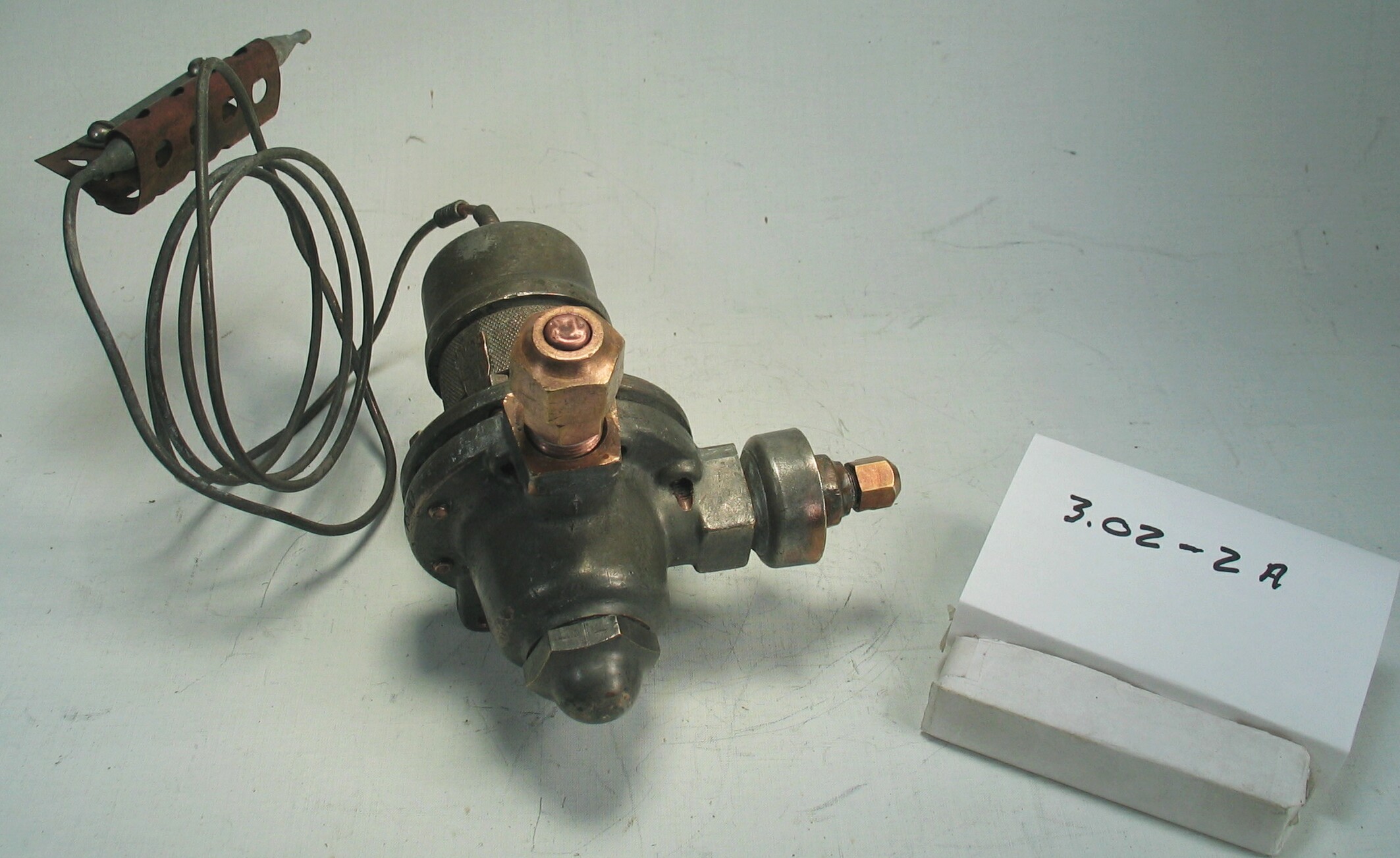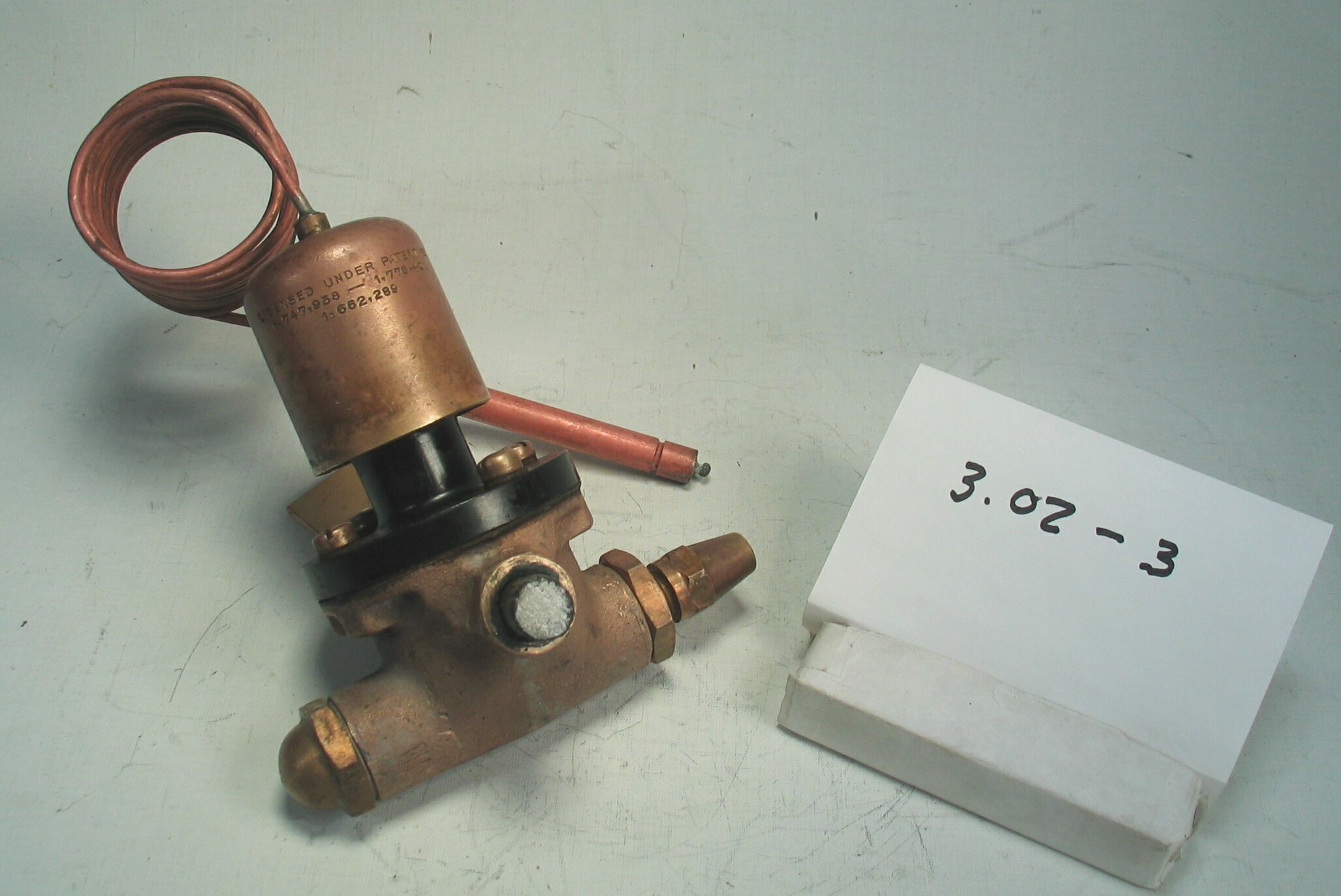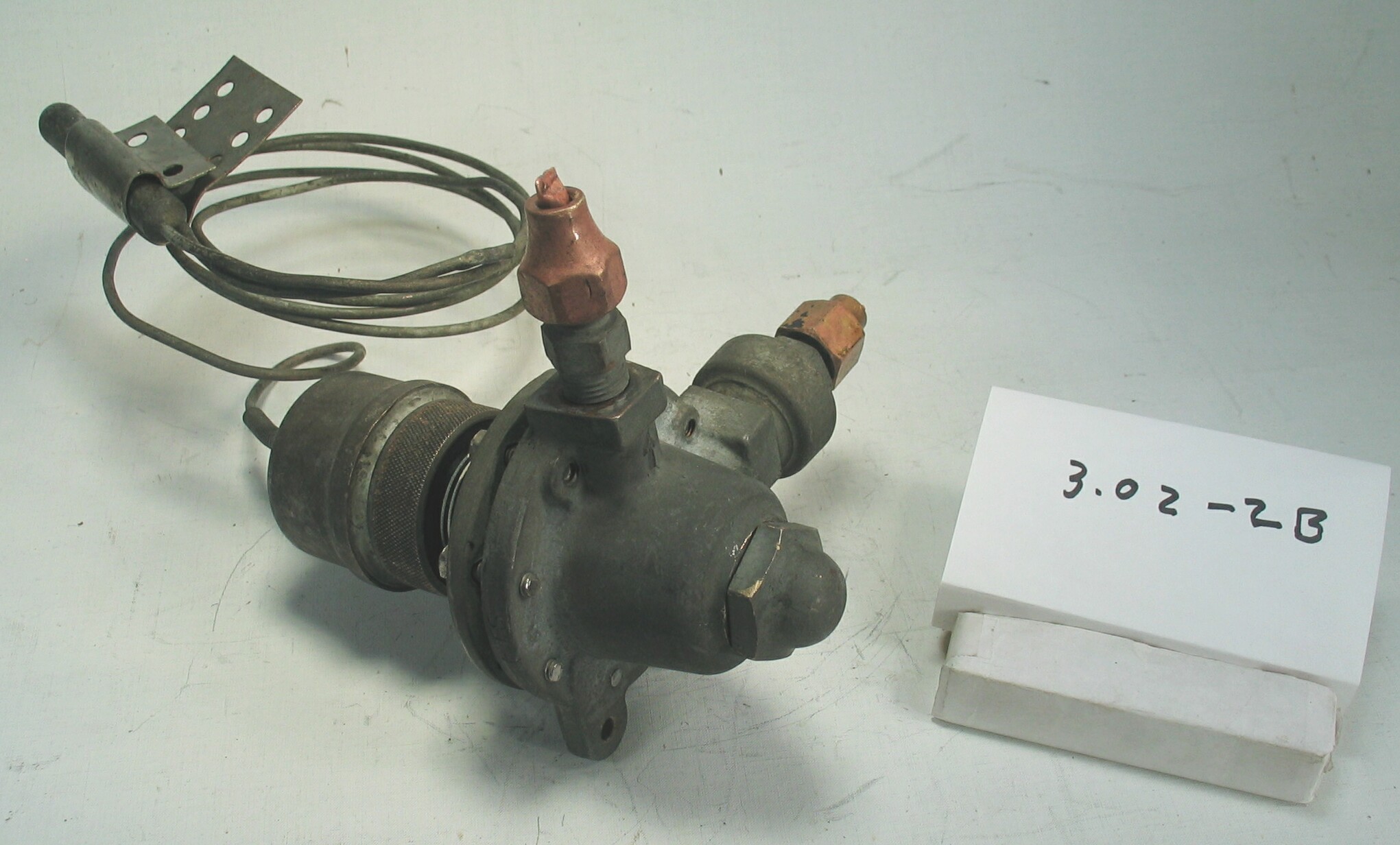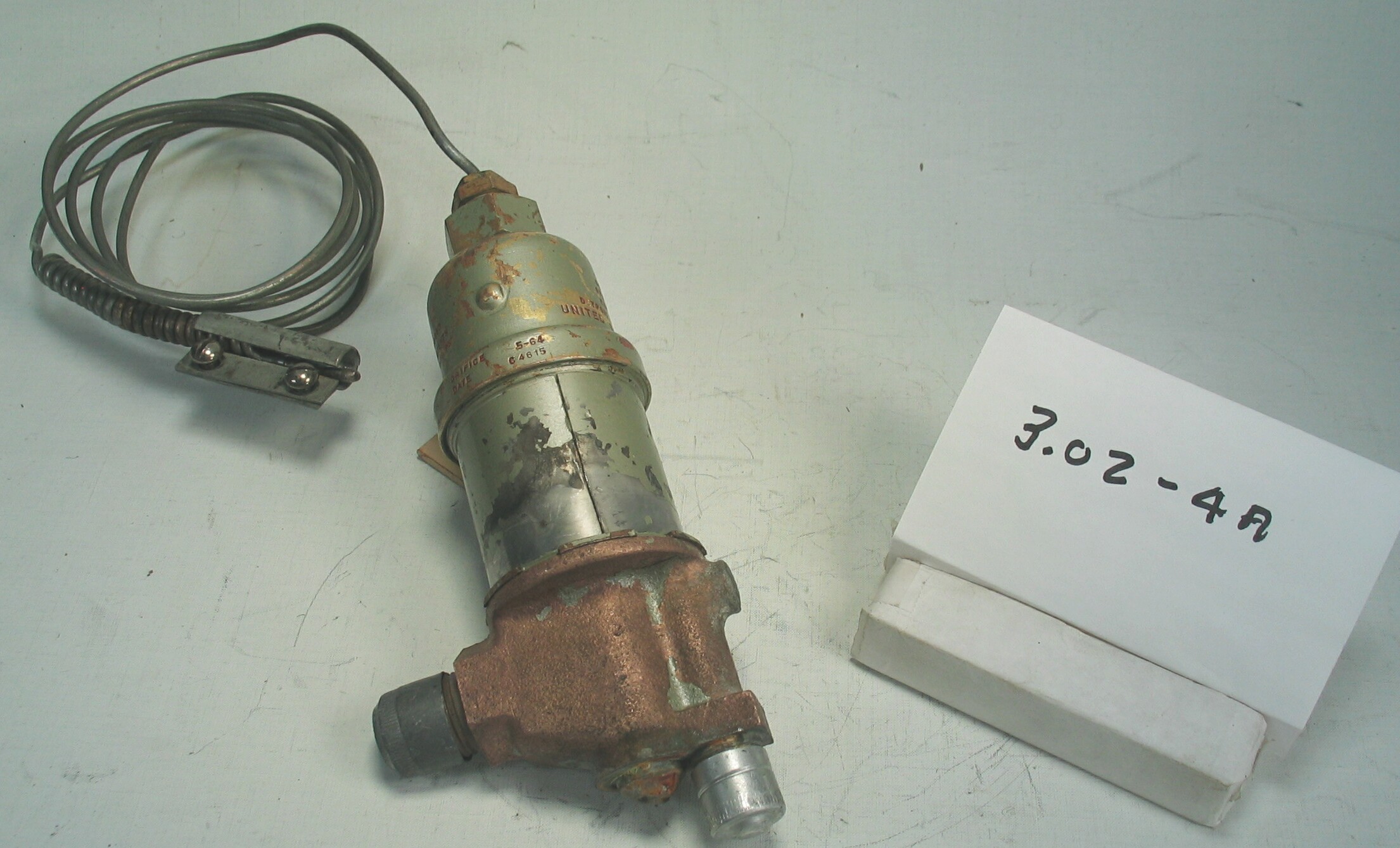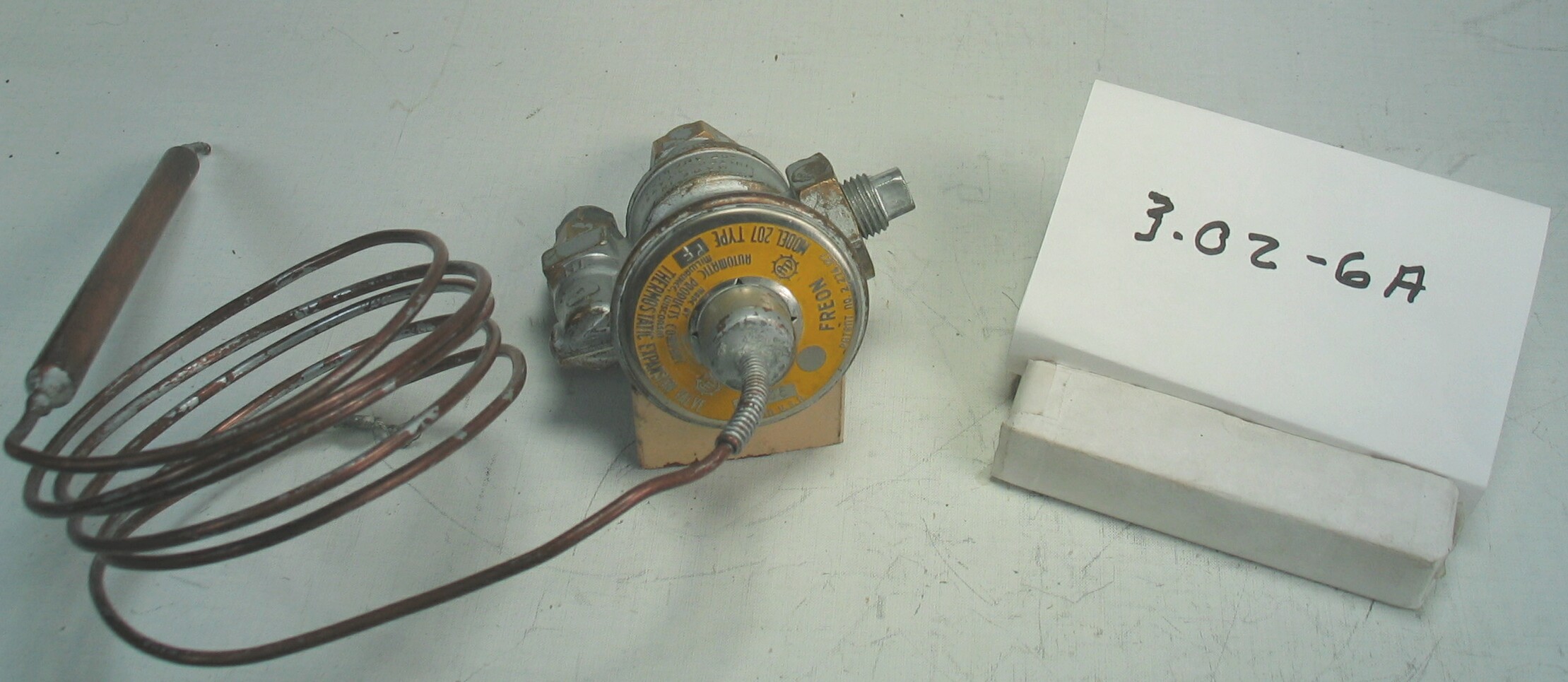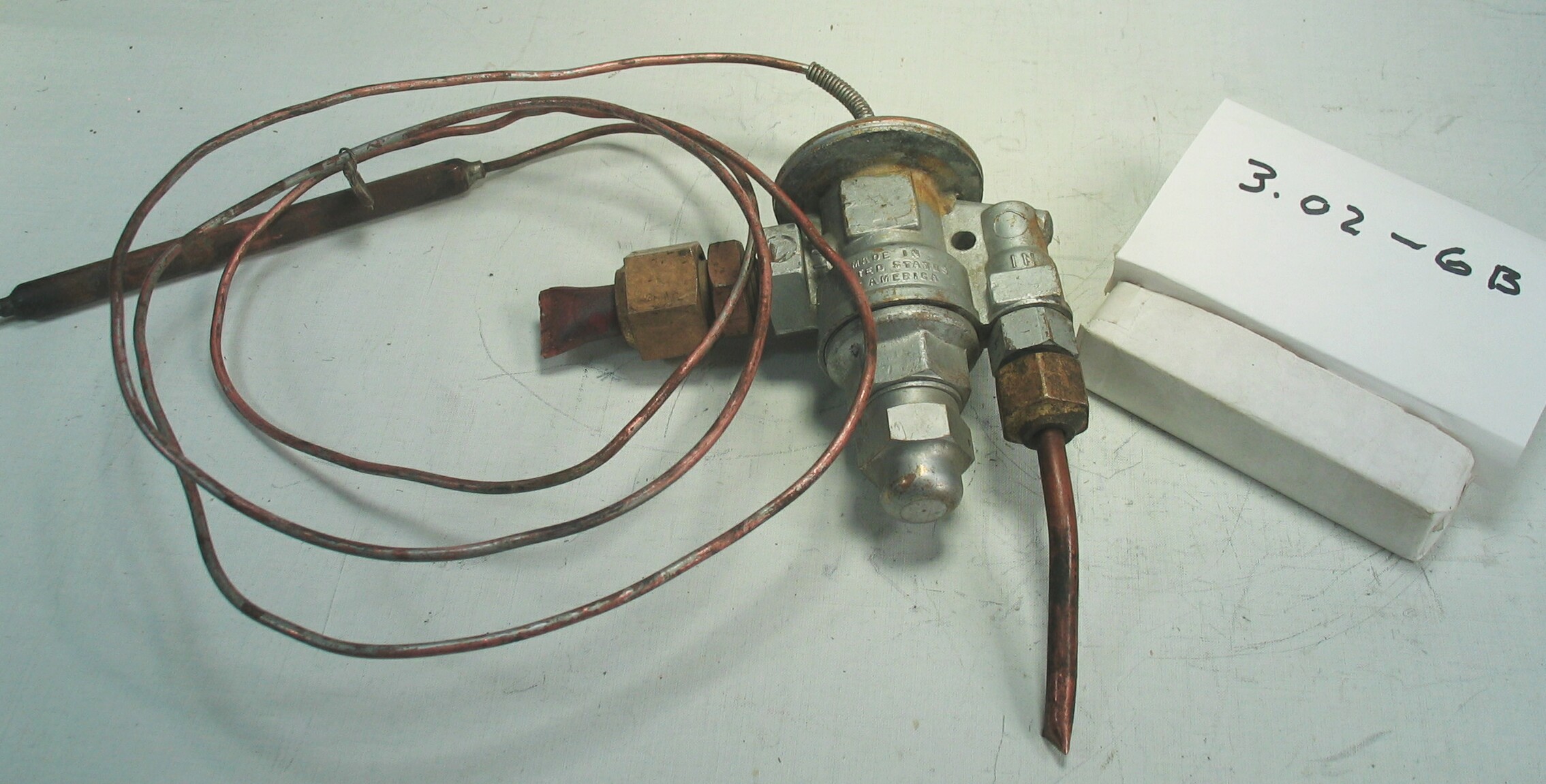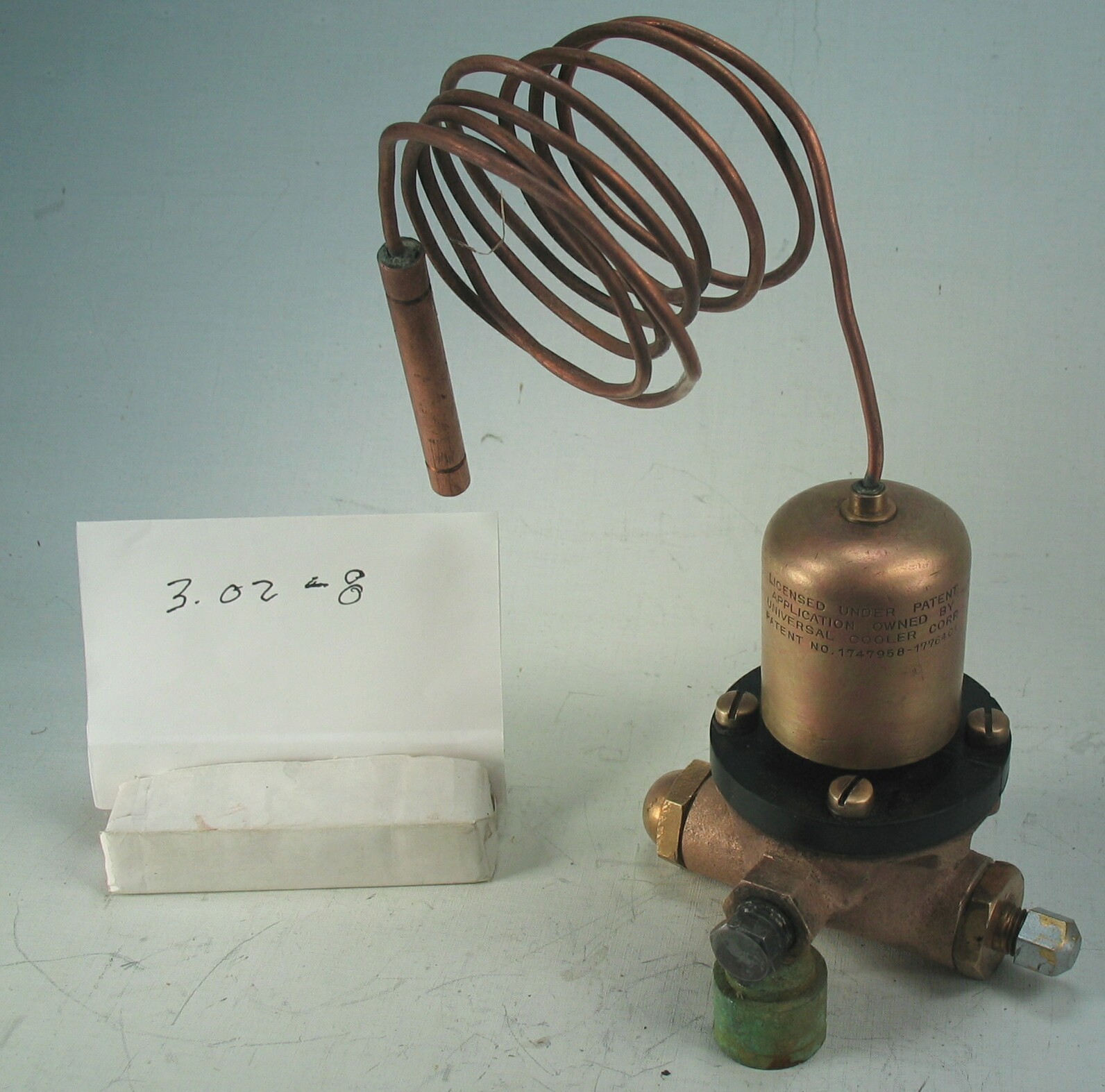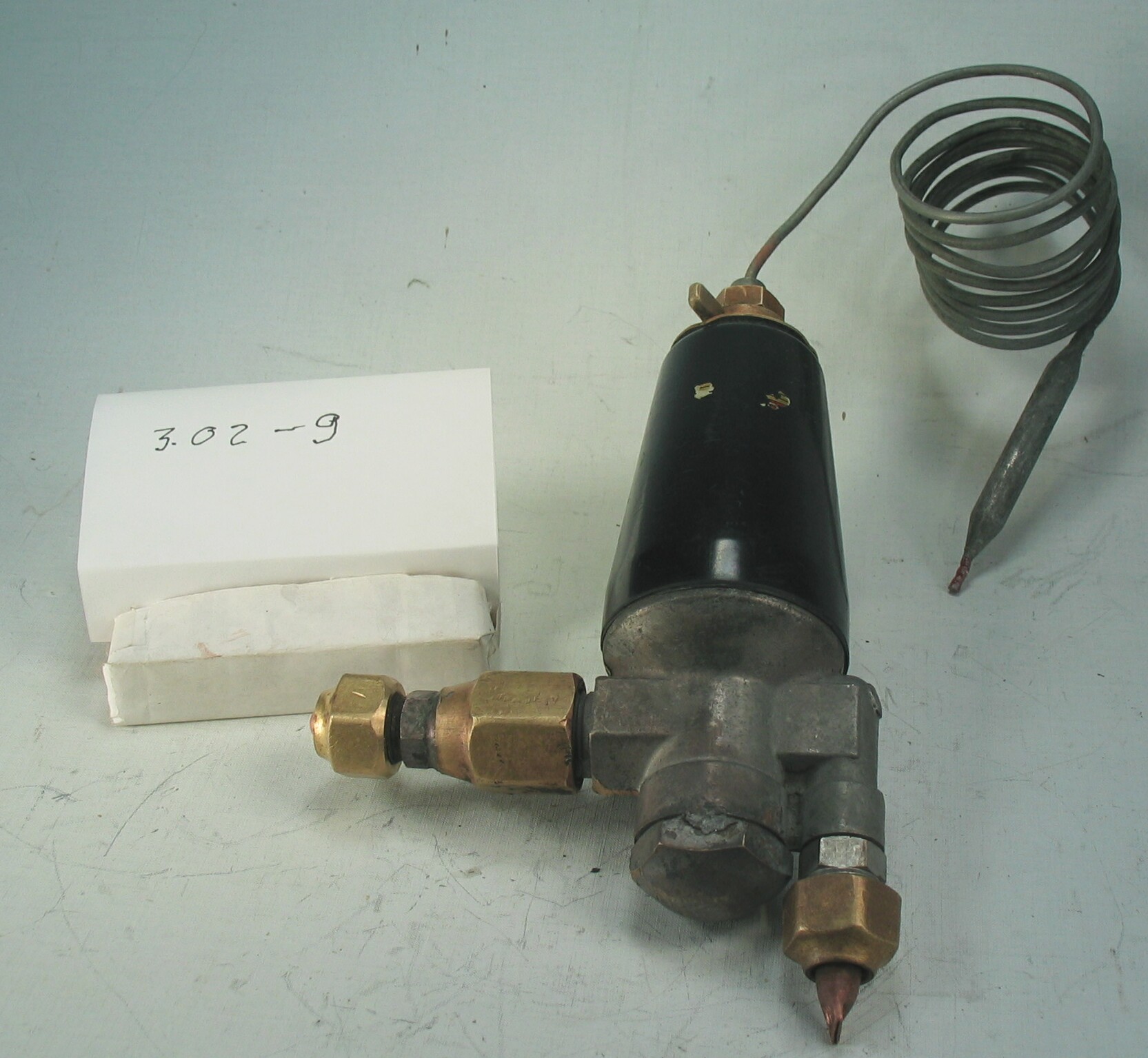3.02-10: 1936 Thermostatic Expansion Valve
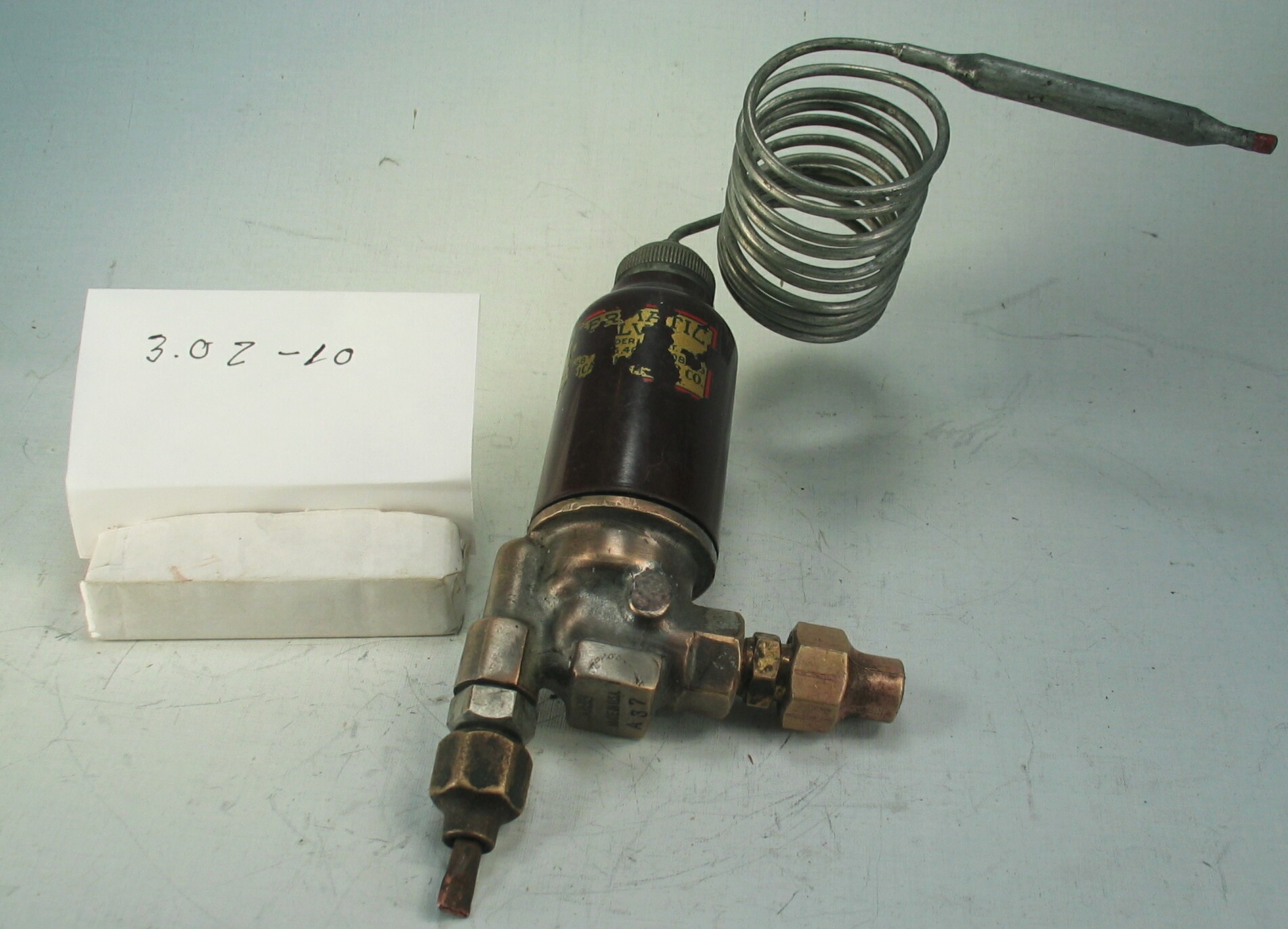
| HHCC Accession No. 2006.080 | HHCC Classification Code: 3.02-10 |
|---|
Description:
An early, small body, adjustable thermostatic expansion fitted with 4-foot remote bulb power element, with brown Bakelite shell and brass body, with stylish, partially obliterated, decal in red and gold, manufacturer yet to be determined based on existing body markings, circa 1936.
Group:
3.02 Refrigerant Flow Controls - Commercial
Make:
Unknown
Manufacturer:
Model:
A37
Serial No.:
Size:
4x 2 x 7 in. h
Weight:
3 lbs
Circa:
1936
Rating:
Exhibit, education, and research quality, illustrating the engineering design, construction, operating principles of thermostatic expansion valve technology of the mid 1930’s
Patent Date/Number:
Provenance:
From York County (York Region) Ontario, once a rich agricultural hinterlands, attracting early settlement in the last years of the 18th century. Located on the north slopes of the Oak Ridges Moraine, within 20 miles of Toronto, the County would also attract early ex-urban development, to be come a wealthy market place for the emerging household and consumer technologies of the early and mid 20th century.
This artifact was discovered in the 1950’s in the used stock of T. H. Oliver, Refrigeration and Electric Sales and Service, Aurora, Ontario, an early worker in the field of agricultural, industrial and consumer technology.
Type and Design:
Construction:
Material:
Special Features:
Accessories:
Capacities:
Performance Characteristics:
Operation:
Control and Regulation:
Targeted Market Segment:
Consumer Acceptance:
Merchandising:
Market Price:
Technological Significance:
The valve would stand as a wonderful icon of the early years in TX valve development, as the industry searched for an alternative to the costly and often troublesome, liquid refrigerant, float valve technology of the mid 1920, and 30’s. This artifact of history tells the many stories of early adoption of this particular refrigerant flow control technology. After a brief flurry of excitement over the use of costly and delicate float operated devices, as a more efficient means of flow control, industry engineers would return to the automatic expansion valve in the early 30’s. But for many medium and larger applications the automatic expansion valve would give way to the more elegant and efficient thermostatic valve for use in a new generation of ‘dry evaporator’ applications.
Industrial Significance:
This valve was more than likely the work of another relative new comer in the refrigeration field in the mid 1930’s. Similar in configuration to the Fedder’s valves of the period, it genealogy remains to be determined from partially obliterated body markings.
Socio-economic Significance:
The socio-cultural significance of the impact of the unobtrusive, thermostatic expansion valve on life in Canada, throughout the latter part of the 20th century, would be hard to over-estimate. It would become the quintessential, automated refrigerant flow regulating device for most medium and larger commercial refrigeration applications, found in confectioneries, food stores and ware houses. It would help to make possible the wide array of foods and confectionery products Canadians would come to enjoy, as part of the late 20th century Canadian life experience.
Socio-cultural Significance:
Donor:
G. Leslie Oliver, The T. H. Oliver HVACR Collection
